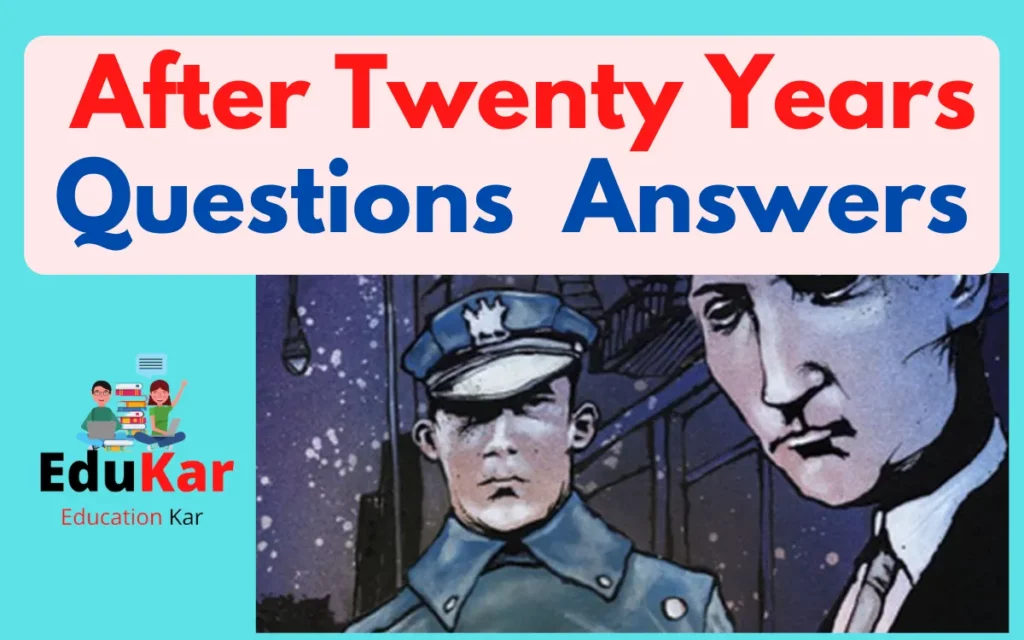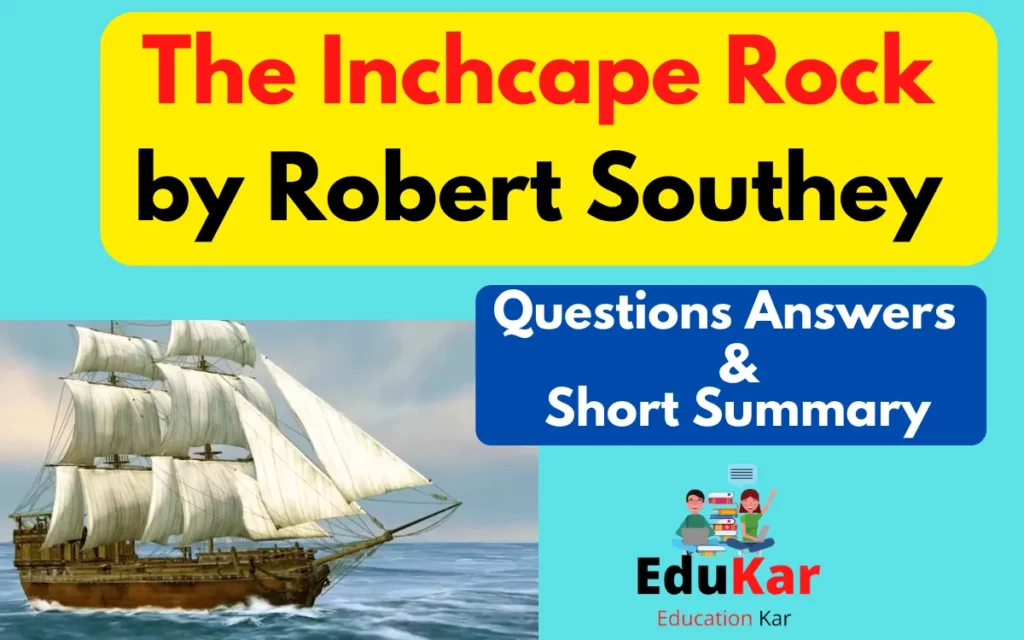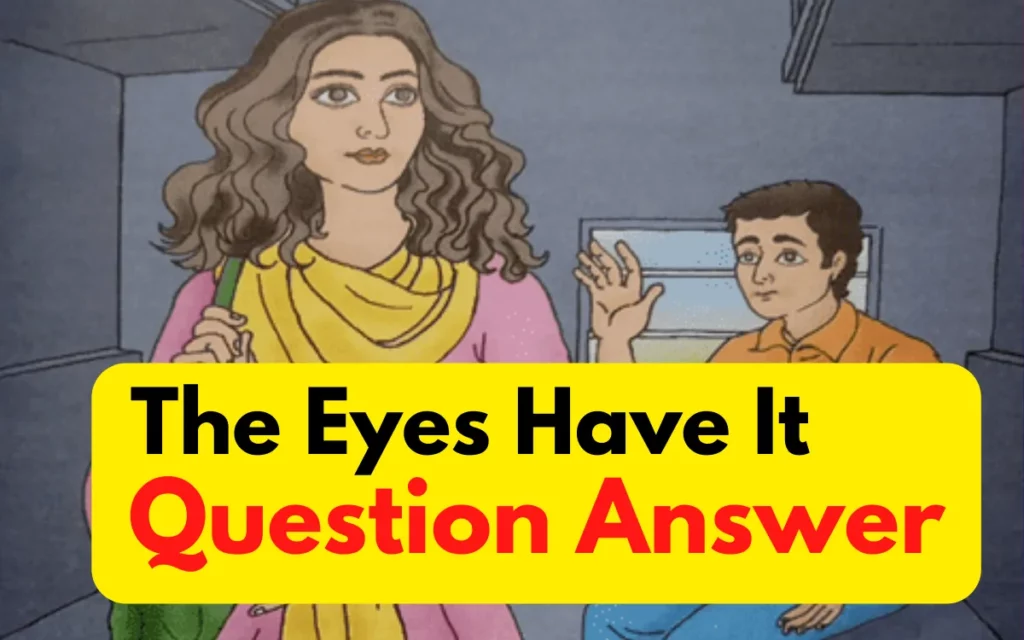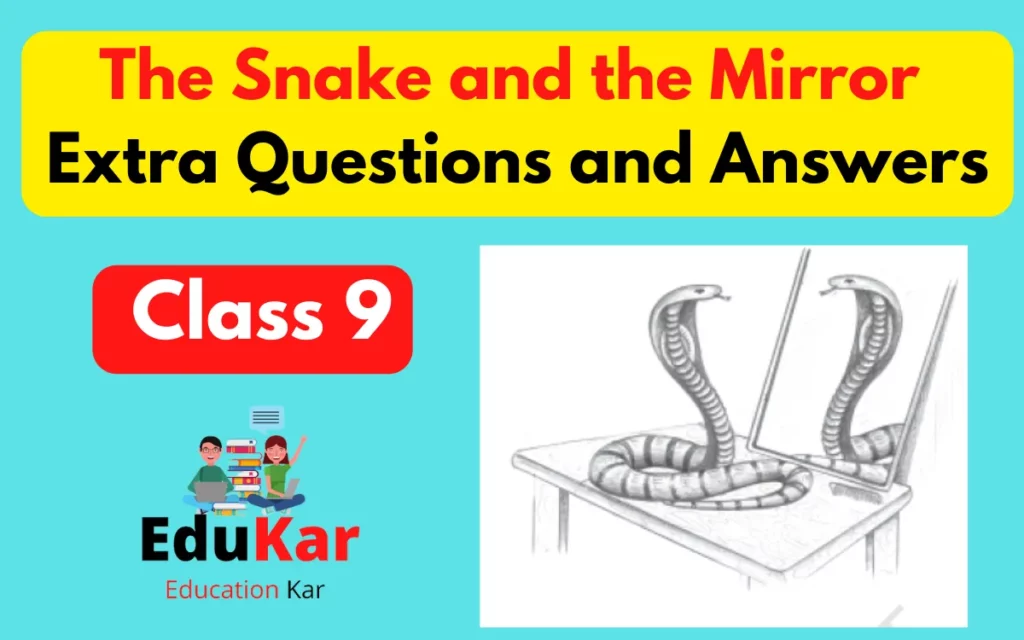
Q1. Why is the poet’s persona travelling at night?
Ans: The poet persona is travelling at night in order to meet his beloved secretly.
Q2. How does Browning in the poem describe the moon?
Ans: In the poem, Browning describes the golden half-moon as huge & low.
Q3. What is the color of the ocean?
Ans: The color of the ocean is grey.
Q4. How lengthy is the sea-scented beach?
Ans: The sea-scented beach is ‘1mile’ long.
Q5. Why did the lover tap at the pane?
Ans: The lover taps at the pane to declare his arrival to his beloved.
Q6. Where does the boat begin to slacken?
Ans: The boat slows down as it approaches the cove & touches the slushy sand.
Q7. Explain the poem’s title, “Meeting at Night.”
Ans. The two lovers’ sincere wish to meet at night in secret is described in Robert Browning’s poem “Meeting at Night.” The poem demonstrates how a lover overcomes all challenges in order to find his sweetheart. Perhaps some sociopersonal issues make their romantic relationships difficult. They plan to meet in secret at night because of this. The lover travels through the arduous grey water. He then traverses three fields and a mile of pleasant, sea-scented beach. He finally arrives at the farmhouse where his ladylove resides, his final objective. The love partners communicate only non-verbally to keep their rendezvous a secret, and they finally meet amid excitement and trepidation. The poem thus links to the theme of the poem & hence it is appropriate.
Q8) ‘And a voice less loud, through its joys & fears’,
‘Than the two hearts beating in sync!’ – Whose voice is being addressed here? Why is the voice full of joy & frighten? Tell us about the meeting.
Ans. Ans. This is a reference to the ladylove’s weak voice from Robert Browning’s “Meeting at Night.” The voice is exuberant since the lovers’ desire to meet at night has been realised. The voice of lady love also conveys anxiety because of their covert encounter. They worry about being found out or captured. The admirer arrives at the farmhouse where his ladylove resides after making a difficult journey and conquering the challenges. He taps on the glass. The love interest who was anxiously anticipating him signals him by scratching a match. Finally, they meet & sense the pleasure of meeting. Their ardent & excited hearts surpass their voices.
Q9. What does the term ‘prow’ mean?
Ans: The term ‘prow’ means the pointy face of a boat or ship.
Q10. What exactly do the ‘fiery ringlets’ stand for?
Ans: The ‘fiery ringlets’ represent the secret passion & anticipation of the lover before meeting his beloved.
Q11. In the poem what does the term ‘cove’ mean?
Ans: Here in the dramatic romance ‘Meeting at Night’, the term ‘cove’ means ‘bay’.
Q12. What does ‘slushy sand’ mean?
Ans: The slushy sand, where the lover slows down his boat, is the soft sand combined with muck at the coast.
Q13. What causes the waves to jolt?
Ans: The poet claims that the approaching boat awakens the waves from their sleep, which causes the waves to jolt.
Q14. Where does the “blue spurt” originate?
Ans: A match lit from within the farmhouse caused the unexpected blue flash of light.
Q15. In “Meeting at Night,” describe the lover’s journey to find his sweetheart.
Ans. In Browning’s poem Meeting at Night, the lover travels a long way to see his beloved. The conference is held in secrecy at night. He boards a boat and travels over the gloomy ocean. Long and dark is the country. He glances at the enormous, low, and yellow moon. With the movement of the boat, the waves that were before asleep suddenly erupt in a blaze of ringlets. He then arrives to the cove and places the boat’s anchor in the sluggish sand. He then strolls for a mile along the pleasantly sea-scented beach. He travels through three fields before arriving at a farmhouse. He declare his coming by tapping the window pane.

![The Poetry of Earth Question Answer 2023 [Short & Long] The Poetry of Earth Question Answer](https://edukar.org/wp-content/uploads/2023/01/The-Poetry-of-Earth-Question-Answer-1024x640.webp)
![How To Tell Wild Animals Questions and Qnswers [English Class 10 Chapter 4] How To Tell Wild Animals Questions and Qnswers [English Class 10 Chapter 4]](https://edukar.org/wp-content/uploads/2023/01/How-To-Tell-Wild-Animals-Questions-and-Qnswers-1024x640.webp)
![Asleep in the Valley Questions and Answers 2023 [Class 12-English] Asleep in the Valley Questions and Answers](https://edukar.org/wp-content/uploads/2022/12/Asleep-in-the-Valley-Questions-and-Answers-1024x640.webp)



![Jimmy Valentine Question Answer & MCQ 2023 [Class 11-WB Board] Jimmy Valentine Question Answer](https://edukar.org/wp-content/uploads/2022/12/Jimmy-Valentine-Question-Answer-1024x640.webp)

![Packing Class 9 Questions and Answers [Class 9 English Beehive Chapter 7 ] Packing Class 9 Questions and Answers [Class 9 English Beehive Chapter 7 ]](https://edukar.org/wp-content/uploads/2023/01/Packing-Class-9-Questions-and-Answers-1024x640.webp)
![Evans Tries An O Level Questions Answers [Class 12 NCERT Solutions] Evans Tries An O Level Questions Answers class 12](https://edukar.org/wp-content/uploads/2023/01/Evans-Tries-An-O-Level-Questions-Answers-class-12-1024x640.webp)
![Strong Roots Question Answer [2022-2023] Strong Roots Question Answer](https://edukar.org/wp-content/uploads/2022/09/Strong-Roots-Question-Answer1-1024x536.webp)


![Leela's Friend Question Answer 2023 [Class XI-WBCHSE, West Bengal] Leela's Friend Question Answer](https://edukar.org/wp-content/uploads/2022/12/Leelas-Friend-Question-Answer-1024x640.webp)
